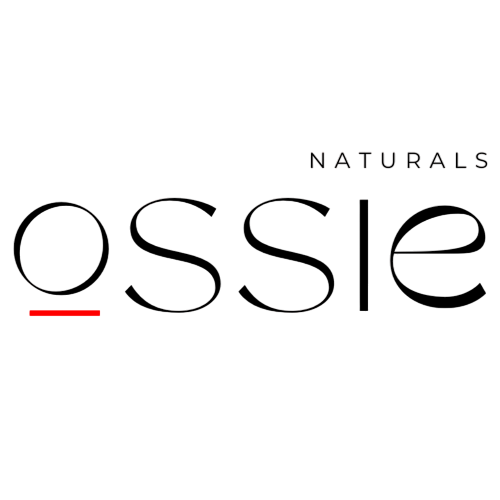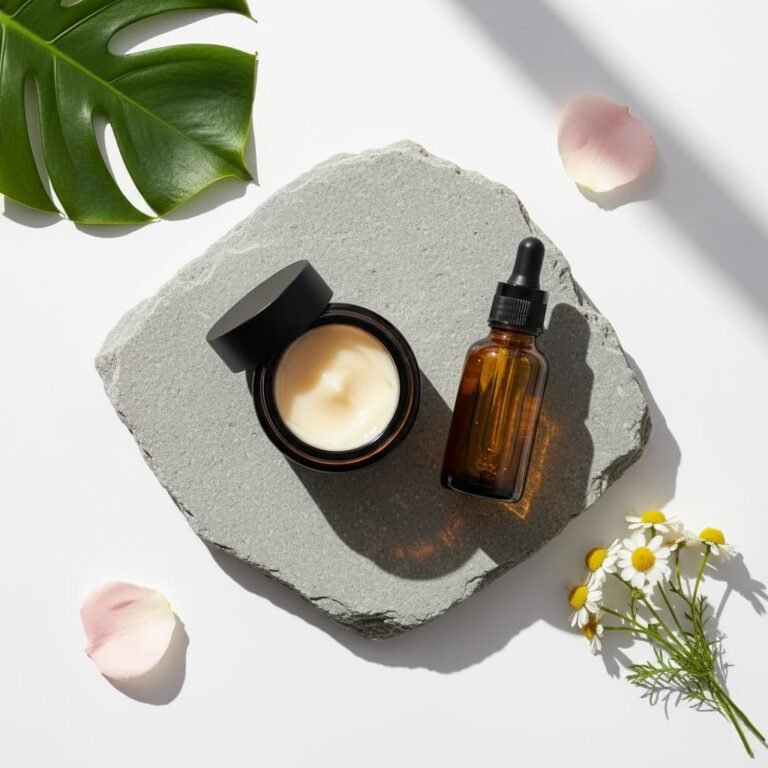Small-Batch Skincare: Why Quality Over Quantity Isn’t Just Marketing Fluff
The small-batch skincare isn't just about artisanal aesthetics; it's about a different approach to quality product that delivers measurably superior results
The Inconvenient Truth About Your Bathroom Cabinet

Walk into any drugstore skincare aisle and you’ll find products manufactured six months ago, sitting under fluorescent lights, waiting to be purchased by someone who’ll use them over the next year or two. Now consider this: would you eat vegetables that had been sitting in a warehouse for six months? Would you expect a pharmaceutical compound to maintain its potency after extended storage under suboptimal conditions? Yet somehow, we’ve been conditioned to accept this approach as normal for skincare.
The small-batch skincare movement isn’t just about artisanal aesthetics or supporting small businesses – though those are worthy considerations. It’s about a fundamentally different approach to product development, manufacturing, and quality that delivers measurably superior results. Let me walk you through why the scale of production directly impacts what ends up on your skin, and why this matters more than most people realise.
The Historical Foundation: More Than Folk Wisdom
The use of animal fats in skincare spans virtually every civilisation throughout recorded history, but this wasn’t simply a matter of using whatever was available. Archaeological evidence reveals sophisticated rendering and preparation techniques across cultures, suggesting our ancestors understood something profound about tallow’s effectiveness.
Egyptian pharaohs were buried with carefully prepared animal fat-based cosmetics, formulated with precise ratios of different fats and oils. Roman bath houses incorporated tallow-based cleansers and moisturisers as standard practice. Medieval European manuscripts contain detailed instructions for rendering and purifying tallow specifically for skincare applications. These weren’t primitive societies making do with crude materials – these were advanced civilisations that had access to numerous alternatives yet consistently chose tallow for skin health and other natural ingredients.
The transition away from tallow-based skincare coincided with industrialisation and mass production, not with superior alternatives. The shift occurred primarily because plant-based ingredients were easier to standardise, had longer shelf lives, and could be produced at scale with consistent profit margins. Consumer preference followed marketing, not performance.
Defining Small-Batch: Beyond the Marketing Buzzword
True small-batch production in skincare typically means manufacturing runs of 50-500 units, depending on the product complexity and demand patterns. This isn’t arbitrary – it’s a deliberate choice that enables practices impossible at an industrial scale.
Small-batch manufacturers can source ingredients in quantities that ensure freshness, maintain direct relationships with suppliers, and make real-time adjustments to formulations. They can personally oversee every step of production, from ingredient inspection to final packaging. Most importantly, they can prioritise ingredient efficacy over shelf stability, creating products optimised for performance rather than storage.
This contrasts sharply with mass production, where manufacturing runs might involve thousands or tens of thousands of units, requiring ingredient purchases months in advance, extended storage periods, and formulations designed primarily around stability and cost rather than optimal effectiveness.
The Science of Ingredient Degradation: Why Freshness Matters
Natural skincare ingredients are complex biological compounds that undergo continuous chemical changes from the moment they’re extracted or synthesised. Understanding this degradation process reveals why production scale fundamentally impacts product quality.
Antioxidant Degradation: Vitamins C and E, essential for skin protection and repair, are notoriously unstable. Vitamin C in particular begins degrading immediately upon exposure to light, heat, and air. In mass-produced products, vitamin C might lose 50% of its potency during the six-month journey from manufacturing to your bathroom cabinet. Small-batch production can deliver vitamin C at 90%+ potency because the time from formulation to use is measured in weeks, not months.
Essential Oil Volatility: The therapeutic compounds in essential oils – terpenes, aldehydes, esters – are volatile by nature. They evaporate and oxidise over time, losing both fragrance and therapeutic properties. Rose oil, for instance, contains over 300 identified compounds that contribute to its skin benefits. After six months of storage, many of these compounds have either evaporated or transformed into different molecules with altered properties.
Botanical Extract Potency: Plant extracts contain complex mixtures of active compounds that can interact with each other and with their environment. Green tea extract, rich in catechins like EGCG, loses antioxidant potency through oxidation. Chamomile extract’s anti-inflammatory compounds degrade when exposed to light and temperature fluctuations. Small-batch production can preserve these compounds at therapeutic levels.
Peptide Stability: Advanced skincare often incorporates peptides for anti-ageing benefits. These protein fragments are particularly sensitive to pH changes, temperature fluctuations, and contamination. Mass production’s extended storage periods increase the likelihood of peptide degradation, reducing their effectiveness.
The Quality Control Reality: Personal Oversight vs. Statistical Sampling
In small-batch production, quality control isn’t about statistical sampling – it’s about personal oversight of every single batch. This fundamental difference has profound implications for product consistency and safety.
Batch-by-Batch Testing: Small-batch producers can afford to test every single production run for pH, microbial contamination, and active ingredient concentration. Mass producers typically test representative samples from much larger production runs, creating opportunities for quality variations to slip through.
Real-Time Adjustments: When a small-batch producer notices that a particular lot of rosehip oil has different characteristics than usual, they can adjust the formulation immediately. Mass producers, working with much larger ingredient quantities and longer production timelines, have less flexibility to accommodate such variations.
Traceability: Small-batch production enables complete ingredient traceability. If an issue arises, producers can track exactly which suppliers, ingredient lots, and production conditions were involved. This level of traceability is virtually impossible in mass production environments.
Environmental Responsiveness: Small-batch producers can adjust formulations seasonally or in response to environmental changes. A winter formulation might include slightly more occlusive ingredients, while a summer version might emphasise lighter, more breathable textures. Mass producers, planning production months in advance, can’t make such responsive adjustments.
The Preservative Paradox: Safety vs. Gentleness
Mass-produced skincare faces a fundamental challenge: products must remain safe and stable for extended periods under various storage conditions. This requirement drives preservative choices that prioritise broad-spectrum antimicrobial activity and long-term stability over gentleness.
Preservative Loading: Mass-produced products often require higher concentrations of preservatives to ensure safety throughout extended shelf life. These higher concentrations increase the likelihood of skin sensitisation and irritation, particularly for people with sensitive skin.
Preservative System Complexity: To achieve the broad-spectrum, long-term protection required for mass distribution, manufacturers often combine multiple preservatives. These complex systems can interact with each other and with active ingredients in unpredictable ways, potentially reducing efficacy or increasing irritation potential.
Small-Batch Advantages: With shorter shelf life expectations and more controlled distribution, small-batch producers can use gentler preservative systems at lower concentrations. They might use natural preservatives like rosemary extract or radish root ferment that would be insufficient for mass-market stability requirements, but work well for fresh products used within reasonable timeframes.
The Economics of Ingredient Quality: Why Scale Affects Sourcing
The economic realities of mass production create systematic pressures toward lower-quality ingredients, while small-batch production enables premium sourcing decisions.
Commodity vs. Premium Sourcing: Mass producers typically source ingredients through commodity markets, prioritising price stability and availability over quality. A mass-market moisturiser might use “rose oil” that’s actually a blend of multiple rose species, synthetic fragrance compounds, and carrier oils. Small-batch producers can source single-origin Rosa damascena from specific farms known for exceptional quality.
Seasonal Availability: High-quality natural ingredients often have seasonal availability windows when they’re at peak potency. Mass producers, needing a consistent year-round supply, must often accept lower-quality ingredients or synthetic alternatives. Small-batch producers can time their production around peak ingredient availability.
Supplier Relationships: Small-batch producers often develop direct relationships with ingredient suppliers, enabling access to premium lots that might be too small for mass producers to consider. They might source sea buckthorn oil directly from a specific region known for high vitamin content, while mass producers use standardised commercial grades.
Processing Methods: Premium ingredients often require specialised processing methods that are economically viable only at smaller scales. Cold-pressed oils retain more beneficial compounds than heat-extracted alternatives, but the lower yields make this approach cost-prohibitive for mass production.
The Innovation Advantage: Formulation Flexibility
The environmental implications of production scale extend far beyond simple carbon footprint calculations, encompassing resource efficiency, waste generation, and ecological impact.
Demand Prediction Accuracy: Small-batch producers, working with shorter lead times and more direct customer relationships, can predict demand more accurately. This reduces overproduction and the associated waste of unsold products. Mass producers, planning production months in advance based on market projections, often generate significant waste through overproduction or product obsolescence.
Packaging Efficiency: Small-batch production enables more sustainable packaging choices. Glass containers, while heavier and more expensive to ship, preserve product integrity better than plastic alternatives. The premium pricing of small-batch products can absorb these additional costs, while mass producers are pressured toward cheaper, less sustainable packaging options.
Local Sourcing Opportunities: Small-batch producers can often source ingredients locally or regionally, reducing transportation impacts. A small producer in California might source jojoba oil from Arizona rather than importing it from Argentina. Mass producers, needing consistent large quantities, often must source globally regardless of transportation impacts.
Waste Stream Management: Small-scale production generates more manageable waste streams that can be handled responsibly. Organic waste might be composted, packaging materials recycled properly, and water usage monitored carefully. Industrial-scale waste streams require complex management systems and often end up in less sustainable disposal methods.
The Quality Control Deep Dive: What Personal Oversight Actually Means
The phrase “personal oversight” gets thrown around frequently in small-batch marketing, but what does this actually mean in practical terms, and why does it matter for product quality?
Sensory Evaluation: Small-batch producers can evaluate every batch using all their senses. They can detect off-odours that might indicate rancidity, observe colour changes that suggest oxidation, and feel texture variations that could indicate formulation issues. This comprehensive sensory evaluation is impossible when dealing with massive production runs.
Immediate Problem Response: When a small-batch producer notices an issue, they can halt production immediately, investigate the cause, and make corrections. In mass production, problems might not be detected until thousands of units have been produced, creating massive quality control challenges.
Ingredient Inspection: Every ingredient delivery can be personally inspected for quality, colour, aroma, and consistency. Variations that might be acceptable for mass production (and averaged out across large batches) can be rejected in favour of premium alternatives.
Process Monitoring: Critical process parameters like mixing time, temperature, and pH can be monitored continuously throughout small-batch production. Deviations can be corrected immediately rather than being discovered through post-production testing.
The Effectiveness Reality: Measuring Real-World Results
The ultimate test of any skincare approach is real-world effectiveness. While controlled studies comparing small-batch to mass-produced products are limited, several factors suggest systematic advantages for small-batch approaches.
Active Ingredient Concentration: Fresh formulations with stable active ingredients can maintain higher effective concentrations. A small-batch vitamin C serum might deliver 15% L-ascorbic acid at full potency, while a mass-produced alternative might start at 20% but deliver only 10% effective concentration by the time it reaches consumers.
Reduced Irritation Potential: Lower preservative concentrations and fresher ingredients typically result in gentler formulations with less irritation potential. This is particularly important for people with sensitive skin or those using active ingredients like retinoids or acids.
Enhanced Penetration: Fresh formulations often have better skin penetration characteristics. Ingredients that haven’t undergone degradation maintain their original molecular structure, which can affect how well they penetrate the skin barrier.
Synergistic Effects: Fresh ingredient combinations can maintain synergistic relationships that degrade over time. The interaction between vitamin C and vitamin E, for instance, is most effective when both ingredients are at peak potency.
The Economic Analysis: True Cost vs. Apparent Cost
Small-batch skincare typically costs more per unit than mass-produced alternatives, but a comprehensive cost analysis reveals a more complex picture.
Cost Per Application: Higher-quality, more concentrated formulations often require smaller amounts per application. A rich, well-formulated small-batch moisturiser might require half the amount of a mass-produced alternative, effectively doubling the number of applications per container.
Replacement Frequency: More effective products might reduce the need for additional treatments or products. A high-quality small-batch serum might eliminate the need for separate treatments for multiple skin concerns.
Long-Term Skin Health: Investing in higher-quality skincare can contribute to better long-term skin health, potentially reducing future costs for corrective treatments or dermatological interventions.
Reduced Product Waste: Higher satisfaction rates with small-batch products mean less money spent on products that don’t work or cause adverse reactions.
The Challenges: Honest Assessment of Small-Batch Limitations

Small-batch production isn’t without its challenges and limitations, and honest assessment requires acknowledging these drawbacks.
Availability Issues: Small-batch products can sell out quickly, creating availability challenges for consumers who find products they love. This unpredictability can be frustrating compared to the consistent availability of mass-produced alternatives.
Price Sensitivity: The higher unit costs of small-batch products can be prohibitive for budget-conscious consumers, potentially limiting access to these quality advantages.
Limited Research: Mass-produced products often have more extensive research backing, including clinical studies and safety data. Small-batch producers may not have the resources for comprehensive research programs.
Consistency Variations: While small-batch producers can maintain high quality standards, there may be more batch-to-batch variation compared to highly standardised mass production processes.
Shelf Life Limitations: Shorter shelf life can be inconvenient for consumers who prefer to stock up on products or who use products infrequently.
The Future Landscape: Where Small-Batch Production Is Heading
Several trends suggest that small-batch production will become increasingly important in the skincare industry.
Technology Integration: Advanced manufacturing technologies are making small-batch production more efficient and cost-effective. Precision dispensing systems, automated quality control, and improved preservation techniques are reducing the traditional disadvantages of small-scale production.
Consumer Education: As consumers become more educated about skincare ingredients and formulation science, demand for high-quality, fresh products is increasing. This educated consumer base is willing to pay premium prices for demonstrably superior products.
Sustainability Priorities: Environmental concerns are driving consumer preferences toward more sustainable production methods, favouring small-batch approaches that generate less waste and enable more responsible sourcing.
Customisation Demand: The trend toward personalised skincare favours small-batch production methods that can accommodate individual variations and preferences.
The Regulatory Environment: How Standards Affect Production Scale
Regulatory requirements for cosmetic production create different challenges and opportunities for small-batch versus mass producers.
Good Manufacturing Practices (GMP): Both small-batch and mass producers must meet GMP standards, but implementation looks different at different scales. Small-batch producers can often achieve higher effective standards through personal oversight, while mass producers rely more heavily on documented procedures and statistical controls.
Safety Testing Requirements: The same safety testing requirements apply regardless of production scale, but small-batch producers may face proportionally higher testing costs per unit. However, they can often use simpler, more straightforward formulations that require less extensive safety evaluation.
Labelling and Claims: Small-batch producers often make more conservative claims about their products, focusing on ingredient quality rather than dramatic results. This approach can actually build more trust with educated consumers who are sceptical of exaggerated marketing claims.
The Professional Perspective: What Dermatologists and Aestheticians Say
Skincare professionals increasingly recognise the advantages of small-batch production, particularly for clients with sensitive skin or specific concerns.
Reduced Sensitisation Risk: Dermatologists often recommend small-batch products for patients with sensitive skin or contact allergies because of their typically gentler preservative systems and fresher ingredients.
Ingredient Transparency: The traceability and transparency common in small-batch production make it easier for professionals to identify potential allergens or irritants when troubleshooting skin reactions.
Customisation Options: Aestheticians appreciate the ability to work with small-batch producers to create customised formulations for specific client needs.
The Global Perspective: Small-Batch Movements Worldwide
The small-batch skincare movement is global, with different regions developing distinct approaches based on local ingredients and traditions.
European Artisanal Tradition: European small-batch producers often emphasise traditional formulation methods combined with modern quality control, creating products that bridge historical knowledge and contemporary science.
Asian Innovation: Asian small-batch producers frequently focus on innovative ingredient combinations and advanced delivery systems, pushing the boundaries of what’s possible in skincare formulation.
American Entrepreneurship: The American small-batch scene emphasises transparency, sustainability, and direct consumer relationships, often leveraging social media and e-commerce to build communities around their products.
Making the Transition: Practical Guidance for Consumers
If you’re considering transitioning from mass-produced to small-batch skincare, here’s a practical approach:
Start Gradually: Don’t replace your entire routine at once. Begin with one product – perhaps a serum or moisturiser – and evaluate the results over several weeks.
Research Thoroughly: Look for producers who provide detailed ingredient information, explain their production methods, and demonstrate genuine expertise in formulation science.
Understand the Investment: Calculate the true cost per application rather than just looking at the upfront price. Factor in the potential for better results and reduced need for multiple products.
Manage Expectations: Small-batch products aren’t magic. They’re simply higher-quality versions of what skincare can be when production priorities align with skin health rather than shelf stability and profit margins.
The Bottom Line: Quality as a Conscious Choice
Choosing small-batch skincare represents a conscious decision to prioritise ingredient quality, formulation integrity, and production values over convenience and cost savings. It’s an acknowledgement that the scale of production fundamentally affects product quality and that these quality differences can translate into measurably better results for your skin.
This isn’t about romantic notions of artisanal production or anti-corporate sentiment. It’s about understanding that different production approaches optimise for different outcomes, and that the mass production approach optimises primarily for cost, shelf stability, and broad market appeal rather than maximum effectiveness.
The science supports what many consumers have discovered through experience: fresher ingredients, careful formulation, and personal oversight create superior skincare products. The question isn’t whether small-batch production can deliver better results – it’s whether those improvements are worth the additional cost and occasional inconvenience.
Experience the Difference: A Scientific Approach
Our small-batch formulations at Ossie Naturals represent the intersection of formulation science and artisanal quality control. Every batch is personally overseen, every ingredient is inspected for quality, and every formulation is optimised for effectiveness rather than shelf life.
We’re not asking you to take our word for it. We’re asking you to experience the difference that fresh, carefully formulated skincare can make for your skin. Join our Ossie Community for priority product release, access to limited production runs, detailed information about our formulation philosophy and more.
Because your skin deserves ingredients at their peak potency, formulations optimised for effectiveness, and production methods that prioritise quality over quantity.
Performance‑led, nutrient‑rich compositions
Our House Collection
Calendula Balm - Original™
Restorative and Calming Concentrate
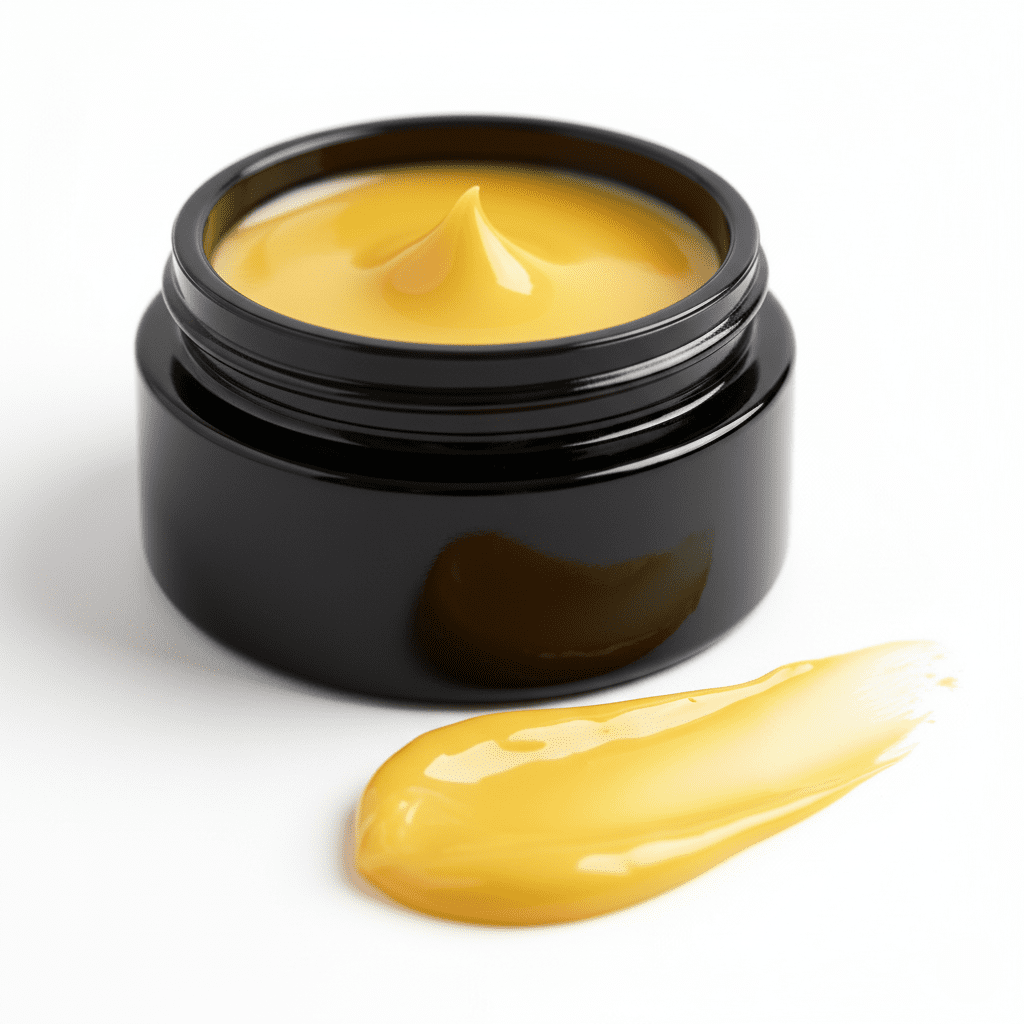
Azure Tansy
Balm™
Intensive Repair and Protection Complex
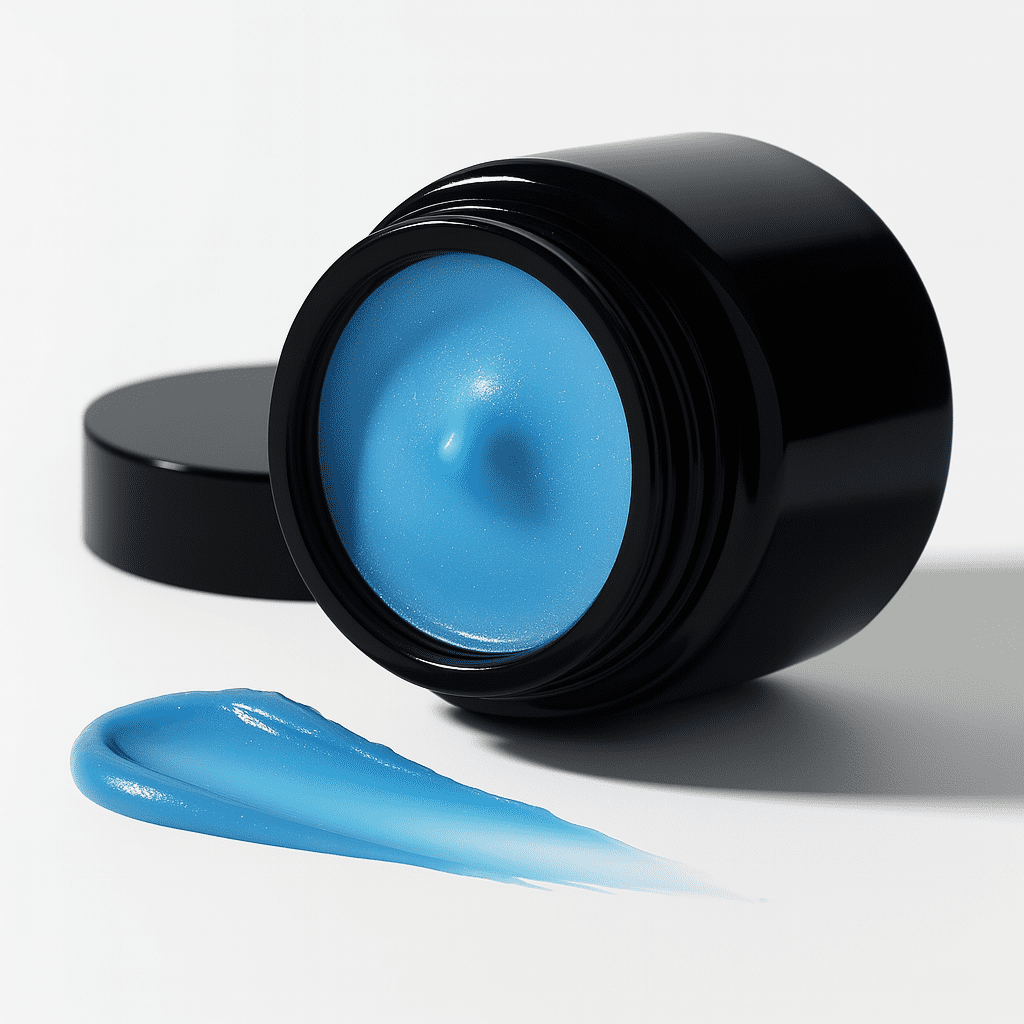
TerraPure - Original Deodorant
Powerful protection, naturally
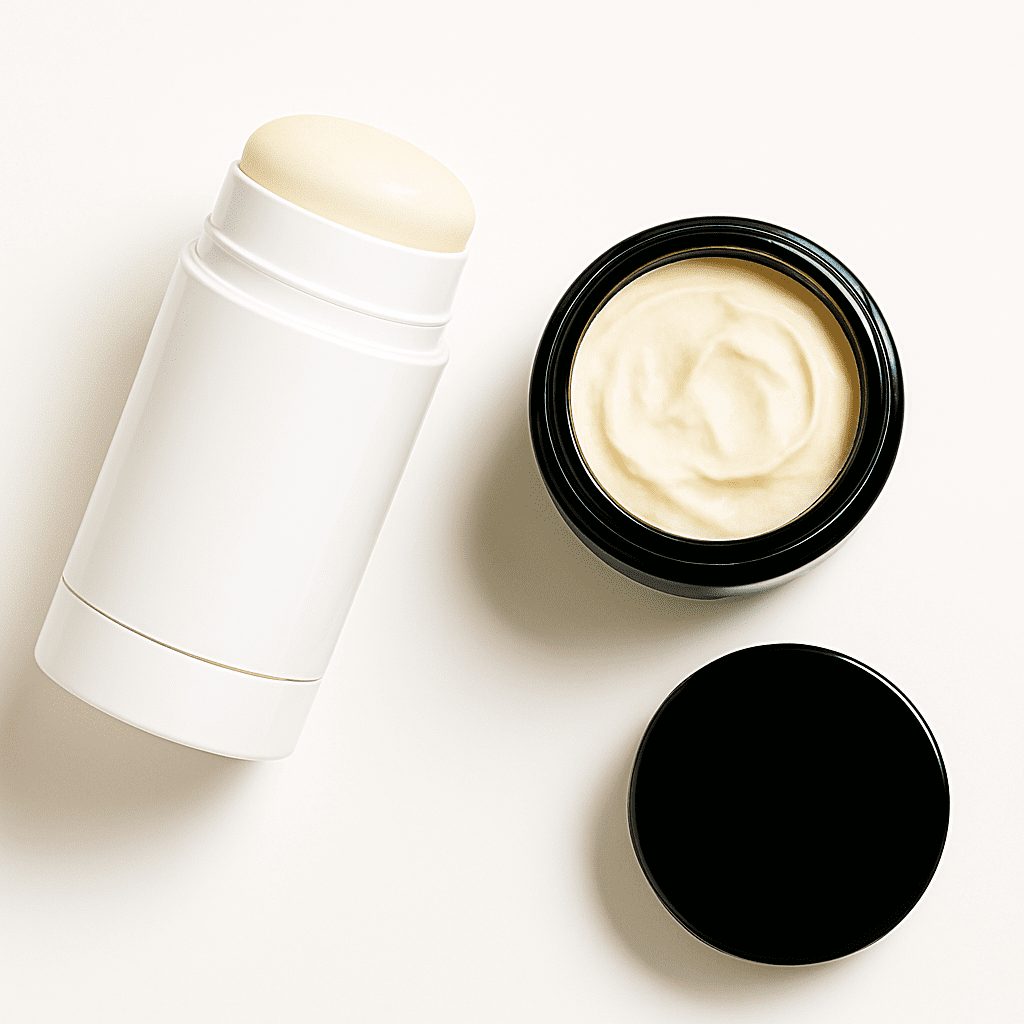
Restorative Phyto‑Serum Oil™
Renewal and Balance. Visible transformation in every drop
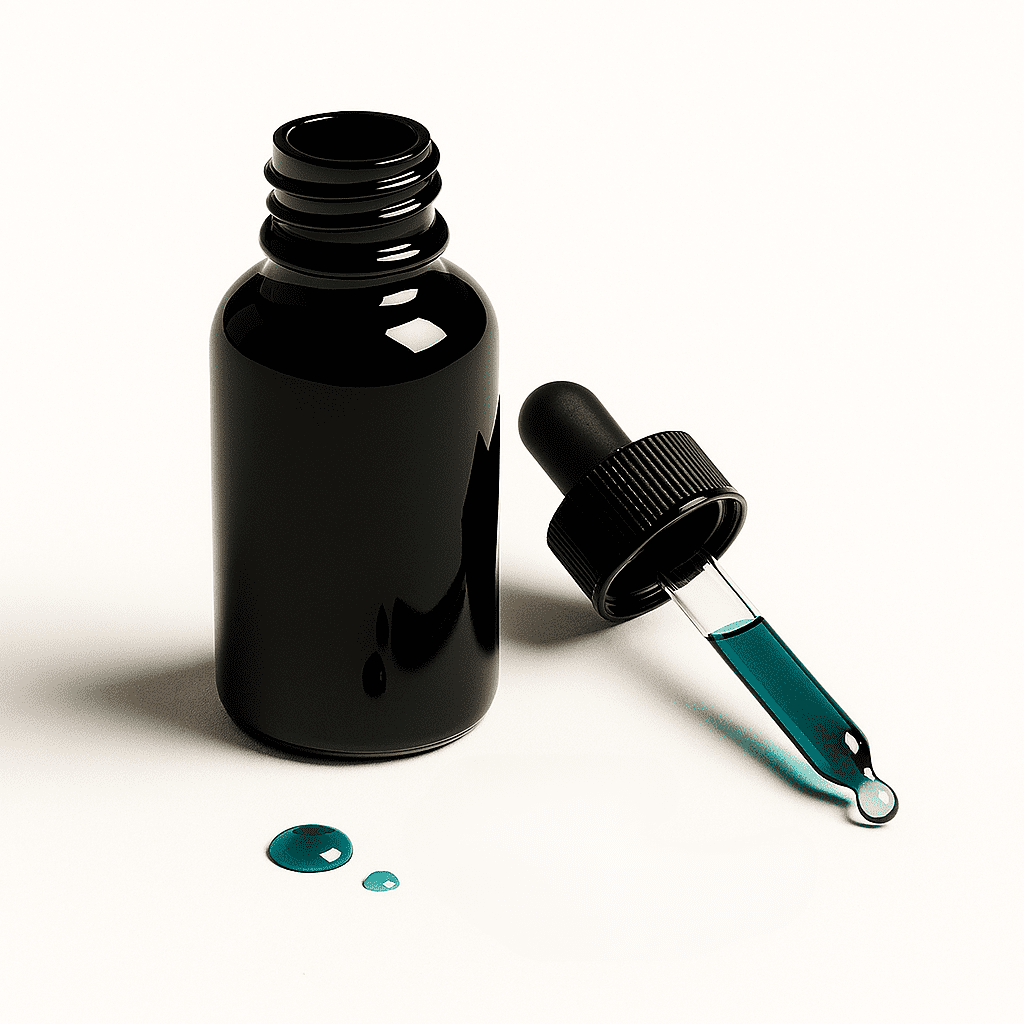
We empower your skin to thrive.
Sign Up Newsletter
Ready to invest in your skin’s future with the finest natural ingredients? Explore our collections or join our community for expert tips and exclusive access.
We value your trust when sharing your personal data with us. We always treat your data in a fair and respectful manner, limited to the purpose mentioned above. If you would like to know more about how we handle your data, please read our Privacy Policy.
